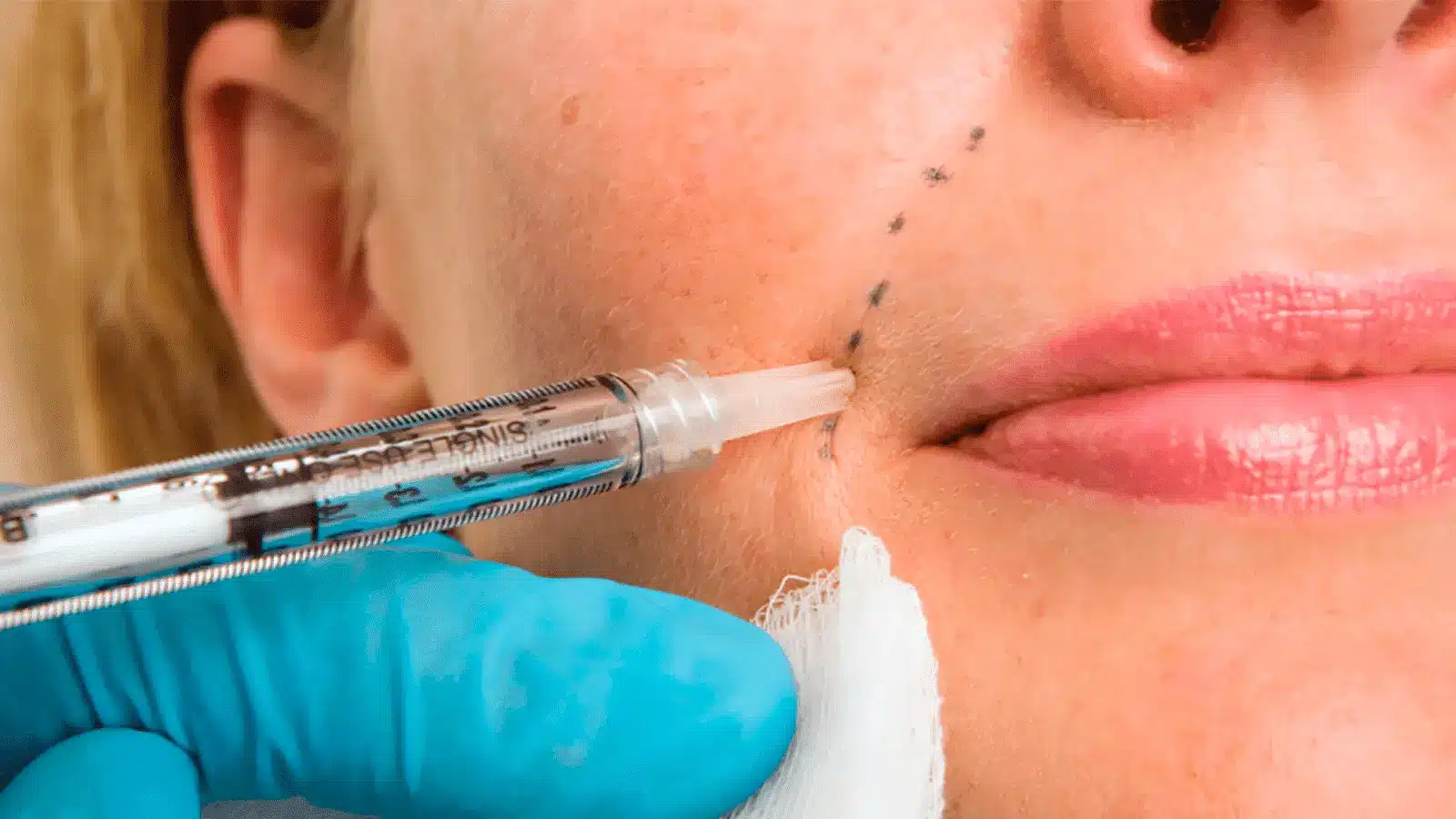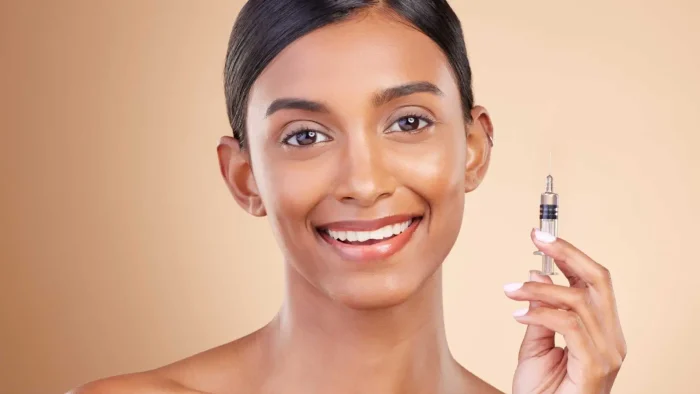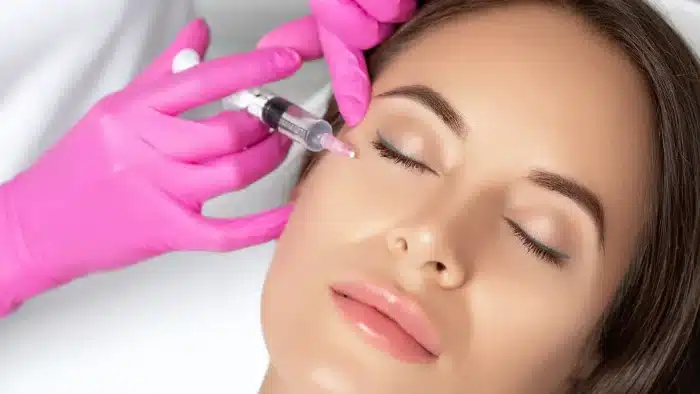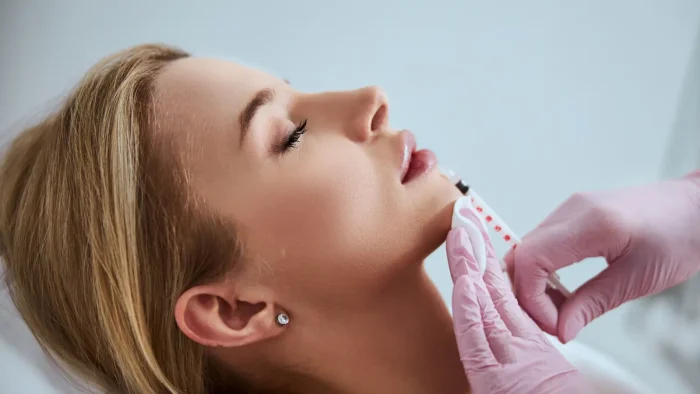
Dermal fillers have become one of the most popular non-surgical cosmetic treatments worldwide. According to the American Society of Plastic Surgeons, over 5 million hyaluronic acid filler procedures were performed in the United States in 2022 alone. These treatments help enhance facial contours, smooth wrinkles, and add volume with minimal downtime.
Two leading hyaluronic acid-based fillers, Revanesse and Restylane, have gained popularity for delivering natural-looking results. While both aim to restore volume and smooth skin, they differ in composition, longevity, and specific uses.
In this article, we’ll compare Revanesse vs Restylane, exploring their benefits, application areas, and how to choose the right filler for your needs.
Key Takeaways
- Revanesse and Restylane are both popular hyaluronic acid-based fillers that offer natural-looking results but differ in their formulations and uses.
- Revanesse is known for its smooth consistency, minimal swelling, and long-lasting results, making it ideal for delicate areas like the lips and fine lines.
- Restylane excels in treating deeper lines and adding volume to areas like the cheeks, offering versatility through its broad range of products.
- Both fillers have their strengths, but the choice depends on individual needs, whether it’s subtle lip enhancement or addressing deeper facial wrinkles.
About: Doctor Medica is your trusted supplier of top-quality dermal fillers, viscosupplements, and more for your medical practice. We offer genuine products from leading brands at the lowest prices in the market. If you’re looking to order Revanesse online for your practice, contact the Doctor Medica today.
Introduction to Revanesse and Restylane Fillers

Dermal fillers are injectable treatments used to smooth wrinkles, restore volume, and enhance facial features. Revanesse and Restylane are two popular options that use hyaluronic acid to achieve their results. Although they serve similar purposes, each filler works slightly differently, offering unique benefits. Choosing the right filler is essential to achieving your desired outcome.
Revanesse is known for its ability to quickly smooth fine lines and provide long-lasting results. Due to its smooth consistency, it’s particularly well-suited for lip enhancement. On the other hand, Restylane excels at treating deeper lines, such as those around the mouth and cheeks. While its effects may not last as long as Revanesse, it’s still an excellent choice for addressing more pronounced wrinkles.
Both fillers offer distinct advantages depending on your specific needs, whether it’s plumping lips or smoothing out deeper facial lines.
Properties and Composition

Both Revanesse and Restylane are made with hyaluronic acid to smooth wrinkles and add volume to the face, but they each have their own unique qualities.
- Revanesse: Known for its smooth texture and long-lasting effects, Revanesse is perfect for treating facial lines, folds, and signs of aging. It’s also a favorite for lip enhancement, providing a natural fullness that feels soft and looks subtle.
- Restylane: This filler also uses hyaluronic acid but is best suited for deeper injections, like those needed for nasolabial folds or adding volume to the cheeks. It’s praised for its natural results and versatility, though it might not last as long or feel quite as smooth as Revanesse in certain areas.
While both fillers are similar in their core ingredient, Restylane tends to be a go-to for deeper facial lines and adding volume, while Revanesse is preferred for a smoother finish and longer-lasting results, especially in more delicate areas like the lips.
Applications and Effectiveness

Revanesse is commonly used for lip enhancement, smoothing fine lines, and treating nasolabial folds. It’s especially known for creating fuller, natural-looking lips with minimal swelling. If you check Revanesse before and after photos, you’ll notice how it subtly plumps the lips and smooths wrinkles without looking overdone. Its results can last up to 12 months.
On the other hand, Restylane is ideal for deeper injections, like adding volume to the cheeks and treating more prominent wrinkles. It offers natural results for patients looking to restore facial volume and contour, though its effects may not last as long as Revanesse in some areas.
Advantages and Disadvantages
| Aspect | Revanesse | Restylane |
| Longevity | Lasts up to 12 months or more, providing long-lasting results | Effective for deeper areas, but may require more frequent touch-ups in softer areas |
| Swelling & Downtime | Minimal swelling and bruising, allowing for quicker recovery | May cause more swelling and bruising, leading to longer recovery time |
| Natural-looking Results | Ideal for subtle, natural enhancements, especially for lips and fine lines | Provides natural results, especially for deeper wrinkles and volume restoration |
| Effectiveness for Deep Lines | Less effective for deeper wrinkles or adding significant volume to the cheeks | Highly effective for treating deep lines, nasolabial folds, and cheek volume |
| Product Variety | Fewer specialized formulations, limiting versatility | Extensive product line for customized treatments in various facial areas |
| Applications | Best suited for soft, delicate areas like lips and fine lines | Versatile, suitable for deep lines, volume restoration, and mid-face areas |
| Recovery Time | Shorter recovery due to minimal swelling | May require longer recovery, especially for sensitive areas like lips |
Patient Experiences and Expert Opinions
Patients who have used both Revanesse and Restylane generally report positive results, but their experiences vary depending on the area treated. Many patients praise Revanesse for its smooth, natural feel, especially for lip enhancements, and appreciate that it causes less swelling and bruising.
On the other hand, those using Restylane often highlight its effectiveness for deeper lines and cheek volume, with many feeling that it delivers reliable, long-lasting results for more defined facial contours.
Experts in the field agree that both fillers have their strengths. Many dermatologists and aesthetic practitioners recommend Revanesse for patients seeking softer, subtle enhancements with fewer side effects, noting that Revanesse side effects, like mild swelling or bruising, are generally minimal and short-lived.
Restylane, however, is often recommended for more significant volume restoration and deeper wrinkles, with experts highlighting its versatility for treating various facial areas.
Conclusion
When it comes to choosing between Revanesse vs Restylane, it depends on your personal goals. If you’re looking for a subtle, natural look with less swelling and a longer-lasting result, Revanesse is a great option, especially for enhancing lips or smoothing fine lines. On the other hand, if you’re aiming to tackle deeper wrinkles or add volume to areas like your cheeks, Restylane offers more versatility.
Ultimately, the best filler for you will depend on your specific needs. Consulting with a skilled professional will help you choose the right product to achieve your desired look with safe and effective results.
FAQs
1. What are Revanesse and Restylane?
Revanesse and Restylane are both popular fillers used in cosmetic procedures. They help to smooth out wrinkles, add volume, and enhance facial features.
2. How do I choose between Revanesse and Restylane?
Choosing between Revanesse and Restylane should be based on your specific needs, the advice of a medical professional, and any personal preferences regarding treatment options.
3. Are there any side effects with these fillers?
Yes, like all treatments, both Revanesse and Restylane can cause side effects such as bruising or swelling at the injection site. It’s important to discuss potential risks with your doctor before opting for either filler.
4. Which filler is more effective – Revanesse or Restylane?
The effectiveness of each filler depends on individual factors like skin type, age, lifestyle habits, etc., so it’s hard to say definitively which one is better without considering these aspects.
References
American Society of Plastic Surgeons. 2023 Plastic surgery statistics. https://www.plasticsurgery.org/news/plastic-surgery-statistics
American Society of Plastic Surgeons. (n.d.). Dermal fillers. Retrieved October 18, 2024, from https://www.plasticsurgery.org/cosmetic-procedures/dermal-fillers
Rho, N. K., Goo, B. L., Youn, S. J., Won, C. H., & Han, K. H. (2022). Lip Lifting Efficacy of Hyaluronic Acid Filler Injections: A Quantitative Assessment Using 3-Dimensional Photography. Journal of Clinical Medicine, 11(15), 4554. https://doi.org/10.3390/jcm11154554
Related Articles
Joanna Carr
Teosyal Filler Reviews – All About the Dermal Fillers
On RealSelf, patients have given Teosyal a "Worth It" rating of 57%. Read more about this trending dermal filler on Doctor Medica.
Joanna Carr
Labia Filler Injections: New Vaginal Rejuvenation Method
There’s no shame in knowing that labia filler injections are rising in popularity. It’s time to consider adding them to your business offer!
Joanna Carr
Jaydess vs Kyleena – Comparing Contraceptives
Jaydess and Kyleena are both hormonal IUDs that offer long-acting reversible contraception with different durations and hormone doses.


